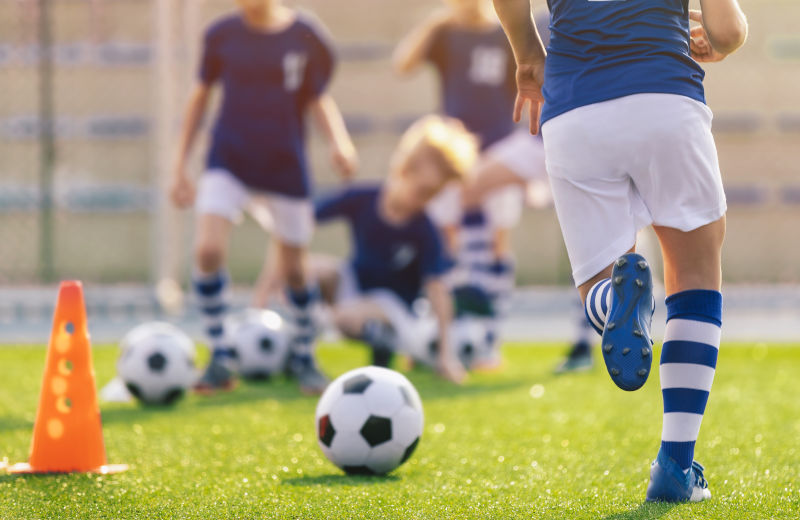Most sports fields in Germany and Europe are designed for the game of football. Pitch sizes can vary, for example, according to the German football Association (DFB), a football pitch can be between 90 and 120 meters long and 45 to 90 meters wide.
A field size of 105 x 68 meters has become generally accepted, which corresponds to the FIFA and UEFA standard recommendation and is also partly mandatory in international competitions. For the players on the field, the viewing distance during a football match is usually less than 100 meters.

DIN EN 12193, which sets out the requirements for sports field lighting, stipulates a horizontal illuminance of 75 lx for football training and recreational sports (lighting class III). For spectators, however, the viewing distance is sometimes considerably greater, so that higher illuminance levels are taken into account for point games (lighting classes I and II). The same applies to American football fields.
| Class | horizontal illuminance | GR | |
| E h,av lx | E h,min /E h,av | ||
| I | 500 | 0,7 | 50 |
| II | 200 | 0,6 | 50 |
| III | 75 | 0,5 | 55 |
Source: Lichtwissen 08, Fördergemeinschaft Gutes Licht
In our example, eight PSH-137 LED floodlights with 5,000 K (light color) and 1,200 watts are planned for a playing area of 100 x 64 meters. The light output is 168,000 lm (lumens). With a light point height (LPH) of 16 meters, a high uniformity of illumination is achieved, with a very good average illuminance of 112 lx (lux). The minimum illuminance is 84 lx, which is higher than specified in lighting class III.
Use our inquiry form or contact us directly:
Lighting class I
High-performance competitions, such as national and international competitions, which generally involve large numbers of spectators and long viewing distances. This class also includes high performance training.
Lighting class II
Intermediate level competitions, such as regional / local competitions, generally involving medium spectator numbers and medium viewing distances. Performance training should also be included in this class.
Lighting class III
Simple level competitions, such as local or small club competitions, generally without spectators, or school and recreational sports, and general training.